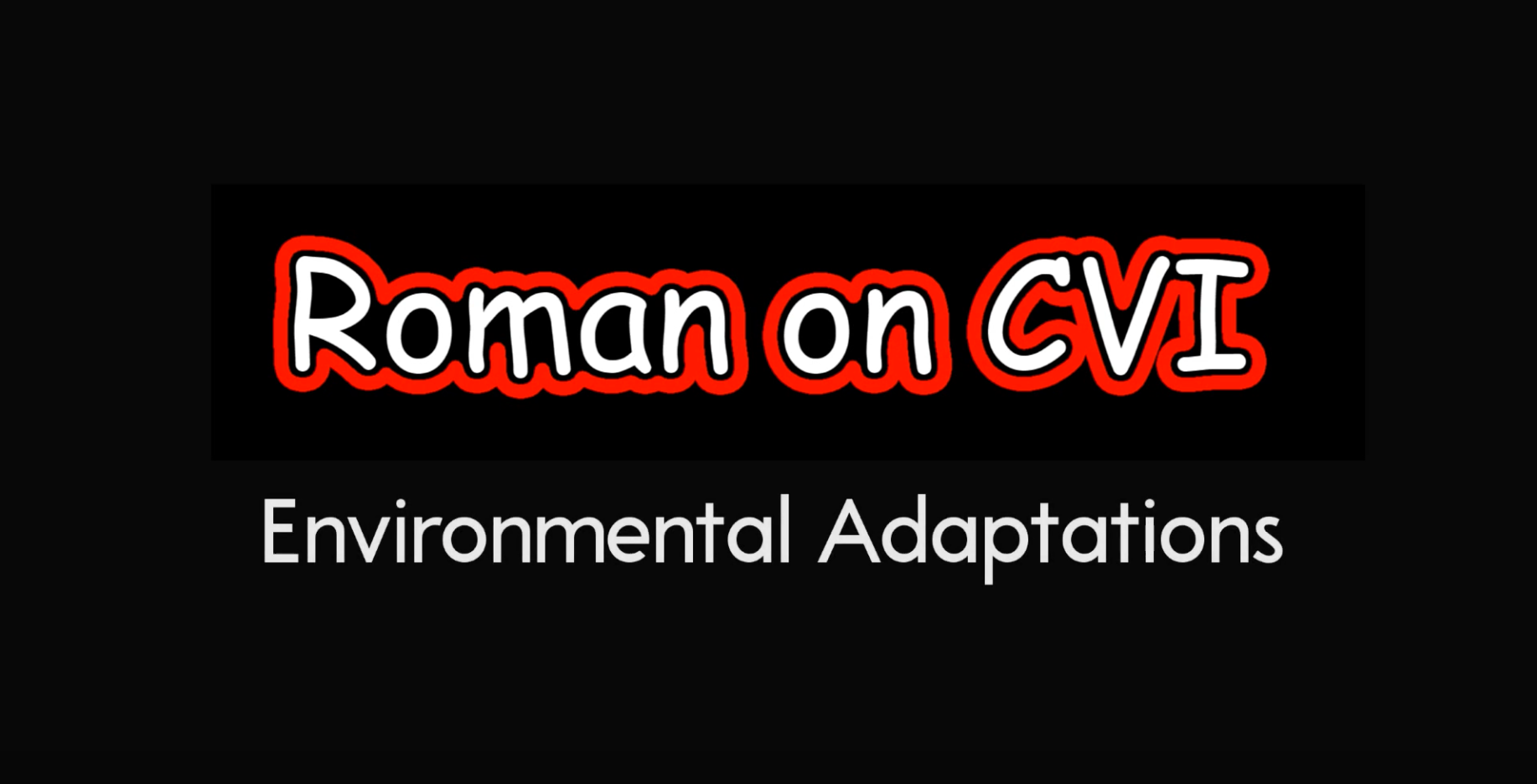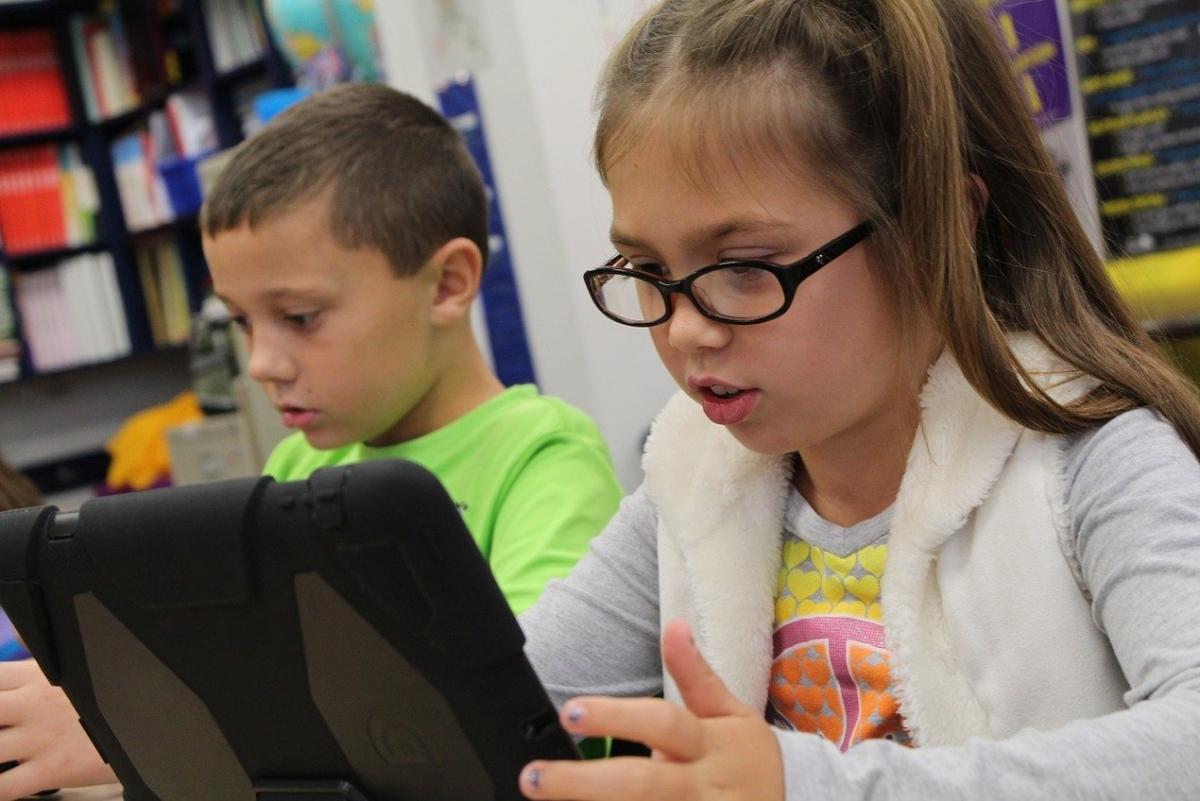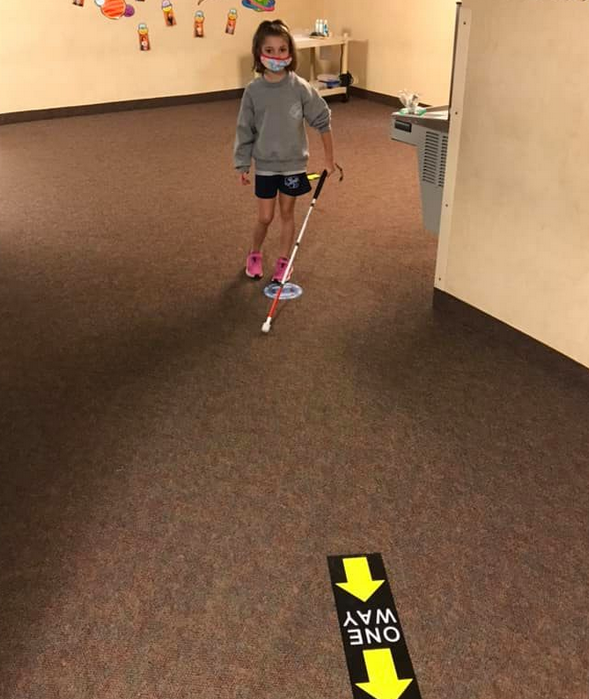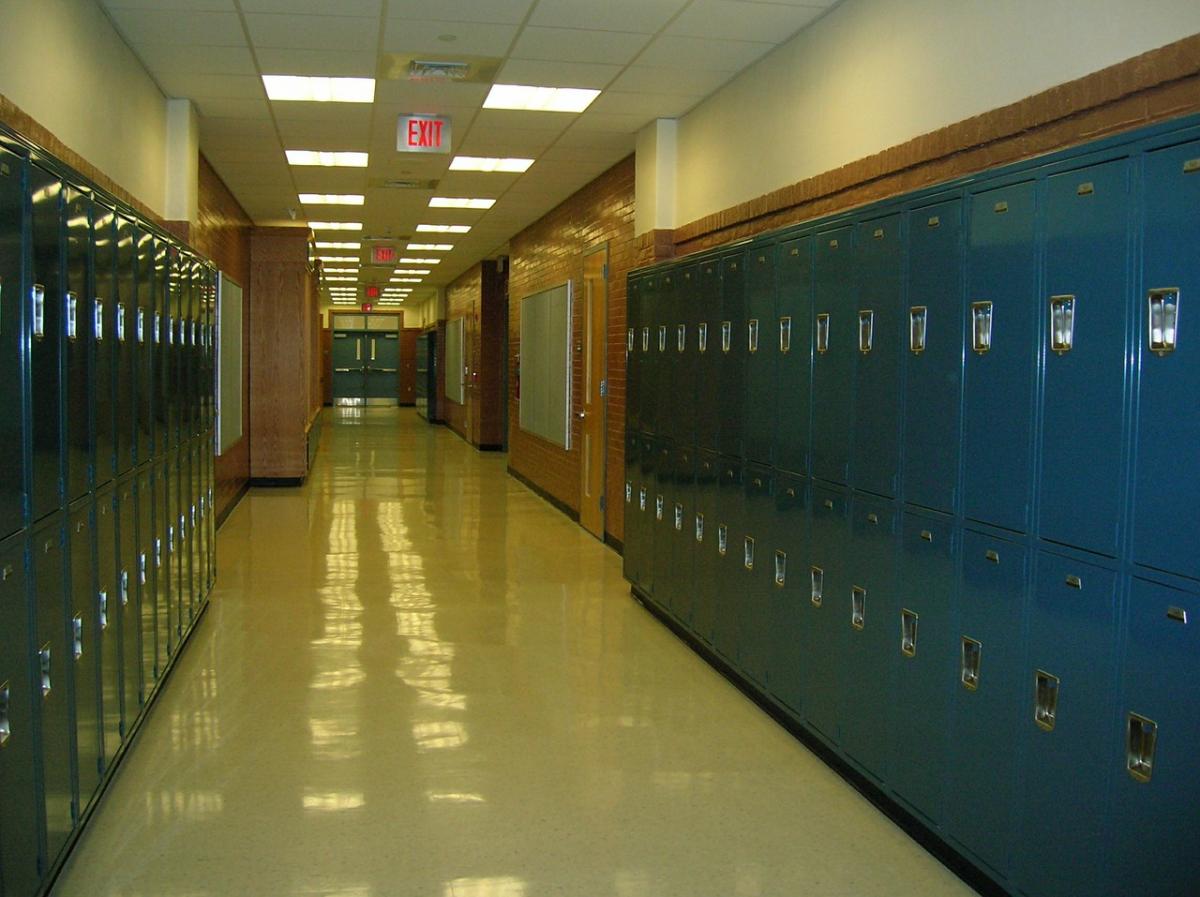
Environmental Adaptations and CVI
In this video, Dr. Christine Roman-Lantzy speaks about how to adapt the environment, the use of maps and O&M (Orientation and Mobility) strategies for students or children with CVI (cortical/cerebral visual impairment).
In this video Environmental Adaptations and CVI, Dr. Christine Roman-Lantzy speaks about how to adapt the environment, the use maps and O&M (Orientation and Mobility) strategies for students with CVI (cortical/cerebral visual impairment).
Environmental Adaptations
Transcript: Environmental Adaptations
Hello. Welcome to Roman on CVI. I’m going to talk today a little bit about adaptations in the environment that are intended to help orient students with CVI. I am an O&M specialist and I have watched a lot of O&M people struggle with this. I’ve also seen some pretty incredible talent in this area as well. I’d like to just take a few moments and review environmental adaptation. So who gets their environment adapted? Well, it can be anyone. It can be even be a person in Phase I on the CVI range.
- Obviously the color and the distance and the presence of movement might all need to be factors. In general we have to ask ourselves, where does this person need to go?
- Where do they need to move?
- Do they need to move within a familiar environment or are they going to start moving out?
- One of the keys, I think, it’s really important to think about is how independently is this person able to navigate, even if they don’t walk on their own. Even if a person is being pushed in a wheelchair. They have a right and a need to know where they’re going and to anticipate what’s next and find their way back.
Color
So environmental adaptations follow a few principles. Obviously color is critical. The use of a vibrant, usually fluorescent color, can be very helpful. I do recommend that when you’re placing a color cue somewhere in the environment, that you do it based on the salient feature of that environmental location. So the edge of a door, or highlighting where an exit sign is, or a corner where a person needs to turn to get to a particular destination. Some people have things they hang on a door and that could change day by day, depending upon where that student is moving.
To highlight too many things is to make nothing salient. To use too many colors is to add confusion. We want to pair that color adaptation that cue with a naturally occurring landmark and something that is meaningful and necessary for that individuals travel. I sometimes suggest that we just ask somebody of the same age, how do you how do you know where you’re going? If you’re going from here to the cafeteria, what are you looking for? How do you know when to turn? Sometimes that very simple approach can be very enlightening.
Using an iPad
Sometimes we can use an iPad to also help the child see what’s coming next and what highlight material we’re looking for, so this is the corner we put a bright orange stripe on this, so you’ll remember to turn there. Let’s see if we can find it in the hallway now.
So the iPad can be used to help preview that and even to discuss it as it’s happening or after. It’s important not to use a whole variety of types of adaptations because again, it can be confusing to the student and can add more complexity. Eventually we want those highlighted cues removed and the landmark itself, like the corner of the exit sign remains. So be very judicious about where you put those those materials because in the end you’re hoping that individual seeks out that information ultimately without that adaptation.

Making Connections and Using Maps
It’s also important that as the students learning a new environment that use comparative language. To talk about how this setting is like your school that you went to last year but this time, the cafeteria is next to the office. Last year it was next to the gymnasium, something that would help talk about what’s the same but what’s different. The use of maps can be very, very helpful in this way.
So all the places that you would highlight, can be represented in two dimension or three dimension using an object map or an iPad map or a map that is a two-dimensional if the student is in high Phase II and up. It’s really important to give that individual a chance not just to move through space but to begin to think about the larger space and where they are in that space.
It helps reduce egocentricity because the individual has to think about more than just where they are at the moment. It helps them think about what’s ahead of them and what’s behind them. It helps reinforce temporal relations because you can begin to ask questions about what how would you get to the cafeteria faster or would you get to the front door faster. So you begin to learn about time and space. It is a really, really helpful task. It’s also a great way, as I said, to review where a person has been.

Maps are not just necessary for getting someone somewhere but for bringing these concepts of space to a higher level. To a place where the child begins to represent information really cognitively. That can be as complex or as simple as you think that individual can handle. It obviously must be matched to that person’s CVI range score. I feel as the maps are often disregarded or thought to be unnecessary especially for an individual who is not moving themselves through space independently. But in fact, it may even be more important for those individuals, because they are not able to just get up and explore on their own.
Using Gathered Information to Transfer and Generalize Skills
I want to say finally, that sometimes people avoid either O&M instruction or the use of maps for students with CVI because they will report to me that well it’s not necessary. She can always just get there.If I say, you know go to the door, she always finds the door. But, the point isn’t that the child can perform this task. It’s really how they do it. You want the individual to be more than living in the moment. You want them to think about the system they use to do it. So that hopefully that system can be transferred to new settings and new places where the skills can be generalized. So to me getting there isn’t as important as knowing how the person did it.

An example that I see a lot at Pediatric View is when I asked students to do a treasure hunt or to look for objects some are familiar, some are novel, out in about a 40-foot hallway. When I’m all done with that task, I will ask the individual to show me the way back to my office. You know you can lead, I’ll follow you and almost always, regardless of age, the student with CVI cannot do it if it requires two turns from maximum. So that tells me that this individual has followed people moving out of the doorway but they haven’t gathered information about their environment doing so.

If I had used some adaptations. If I had talked about it. If I had previewed it. If I asked the individual to tell me or show me what we’re looking for next. I think the situation would be different about those individuals finding their way back. In a way it’s kind of like you, as providers, are that individual’s GPS. They never have to think about how they’re getting somewhere. You’re just going to take them by the shoulders and turn them, or prompt them, or encourage them to come forward. If they make a wrong turn, just like your GPS tells you where to go.
But like your GPS, if you had to repeat that route you might be in trouble. If you haven’t gathered systematically and intentionally information that really confirms where you are, and helps you use that information in the future, you’re really just an act of one time. It has no real learning involved.
I hope this has been helpful and I look forward to talking to you again.
